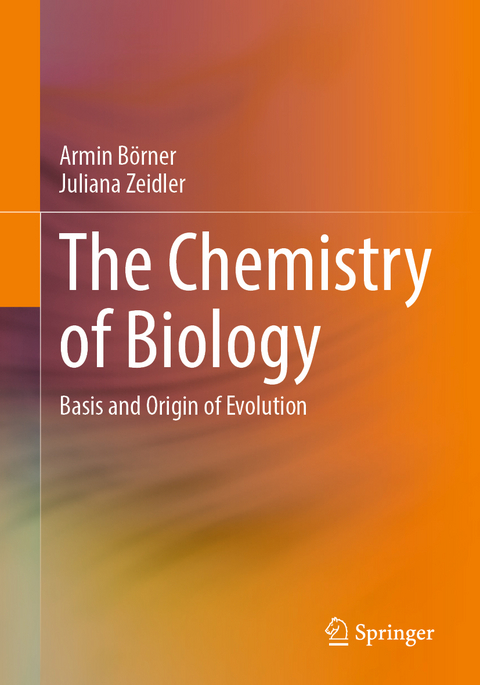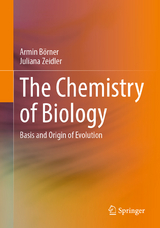The Chemistry of Biology
Springer Berlin (Verlag)
978-3-662-66520-6 (ISBN)
Living organisms are distinguished by their chemical basis. Thus, knowledge of the properties of the elements and the interactions of the resulting compounds is a prerequisite for understanding biology.
Chemistry answers the questions of why, among the more than 100 elements of the periodic table (PSE), carbon and not silicon is the dominant element in biology and why precious metals, such as gold and silver, do not play a role. The PSE provides information about why phosphoric acid and not sulfuric acid acts as a bridge in polynucleic acids and why DNA had to evolve from RNA. At the same time, only chemistry makes clear why D-glucose is so central in building biopolymers such as cellulose and glycogen, and why the citrate cycle is logically self-contained and without alternative. Biochemistry is also a synthesis chemistry that differs from "man-made" synthesis chemistry "only" in terms of the framework conditions. Individuals are selected from the multitude of elements of the PSE and the almost infinite number of chemical compounds. The selection is based on the environmental conditions on Earth, such as moderate temperatures, preferably atmospheric pressure, solvent water and as primary reaction partner oxygen.
The hypothesis is developed that the guiding principle of modern biology, the theory of evolution, has its roots in the underlying chemistry. This turns Darwinism from its biological head to its chemical feet. For example, the effect of phenols as radical scavengers is a priori chemical, before biological phenomena could evolve from it as differences in distinction in colored flowering plants. The book develops a completely new, chemistry-centered view of "animate nature" and challenges a changed, biologically oriented didactics of chemistry in schools and universities.
lt;p>Armin Börner taught as a professor of organic chemistry at the University of Rostock until 2020 and, after retirement, continues to work as a department head at the Leibniz Institute for Catalysis. He has edited or self-authored several textbooks on special aspects of homogeneous catalysis. In 2001, he received the Descartes Prize of the European Union. His non-fiction book "Chemistry. Connections for Life" was awarded the 2021 Literature Prize of the Chemical Industry Fund.
Juliana Zeidler studied chemistry and biology in Rostock until 2012 to become a teacher for grammar schools. After completing her teacher training in dual qualification, she taught at various schools in Graal-Müritz, Rostock and Bad Doberan. Since 2018, she has been working as a seconded teacher at the University of Rostock in chemistry didactics for the Teacher Training Center.
The periodic table of elements and fundamental consequences for the structure of natural products and the operation of biochemical processes.- Extrinsic properties favoring the occurrence of elements in a biological context.- The derivatization of inorganic compounds with carbon residues.- The singular properties of carbon as the basis for the origin of life.- From chemical structures and single reactions to complex biochemical networks.- Determinacy, flexibility, and contingency in biochemistry.- "Synthesis chemistry" versus biochemistry.
| Erscheinungsdatum | 15.03.2023 |
|---|---|
| Zusatzinfo | XVI, 222 p. 358 illus., 303 illus. in color. |
| Verlagsort | Berlin |
| Sprache | englisch |
| Maße | 168 x 240 mm |
| Gewicht | 506 g |
| Themenwelt | Naturwissenschaften ► Chemie ► Organische Chemie |
| Schlagworte | Chemical background to biology • Chemistry and biology • Chemistry simply explained • Explained understandably • OC and Bio • Organic structures |
| ISBN-10 | 3-662-66520-4 / 3662665204 |
| ISBN-13 | 978-3-662-66520-6 / 9783662665206 |
| Zustand | Neuware |
| Haben Sie eine Frage zum Produkt? |
aus dem Bereich




